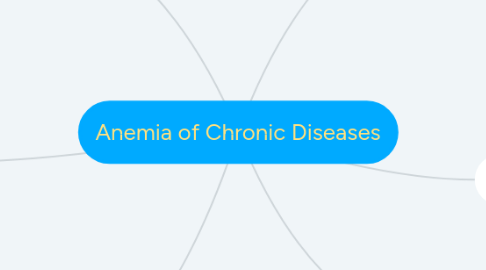Anemia of Chronic Diseases
by Catherine Glassman

1. risk factors
1.1. Patients older than 60 years of age had a 24% 3-year incidence of ACD
1.2. Chemotherapy with or without radiation therapy increases the incidence of anemia to 63% and 42%
1.3. Human immunodeficiency virus (HIV) infection is often associated with anemia with a prevalence as high as 55.8%
1.4. Rheumatoid arthritis (RA) is associated with mild anemia, with a prevalence from 33% to 60%
2. diagnostic tests
2.1. CBC
2.2. hematocrit and hemoglobin
2.3. ferritin level
2.4. transferrin saturation (TSAT) is a score that indicates how much iron is available
2.5. EPO levels
3. common findings
3.1. ACD is the second most common cause of anemia, after iron deficiency anemia
3.2. most frequent anemia in hospitalized patients
3.3. commonly occurs with chronic, or long term, illnesses or infections
3.4. fatigue weakness pale skin a fast heartbeat shortness of breath exercise intolerance
4. pathophysiologic etiology
4.1. inhibition of red blood cell (RBC) production
4.2. mildly decreased RBC life span
4.3. hemoglobin levels in the 8 to 9.5 gm/L range
4.4. synthesis of the iron regulatory antimicrobial peptide hepcidin is induced by inflammatory cytokines during acute and chronic disorders
4.5. Elevated levels of inflammatory cytokines could enhance erythrophagocytosis and anemia
4.6. Elevated interferon y levels have reduced RBC survival because of RBC removal by cytokine-stimulated macrophages
5. causative factors
5.1. Inflammatory diseases
5.2. cancer cells may secrete certain substances that damage or destroy immature red blood cells
5.3. cancer cells or infectious disease may infiltrate the bone marrow, the soft spongy material found in long bones where blood cells are formed
6. treatments
6.1. health care providers focus on treating the underlying illness
6.2. synthetic form of EPO may be prescribed
6.3. iron supplements


